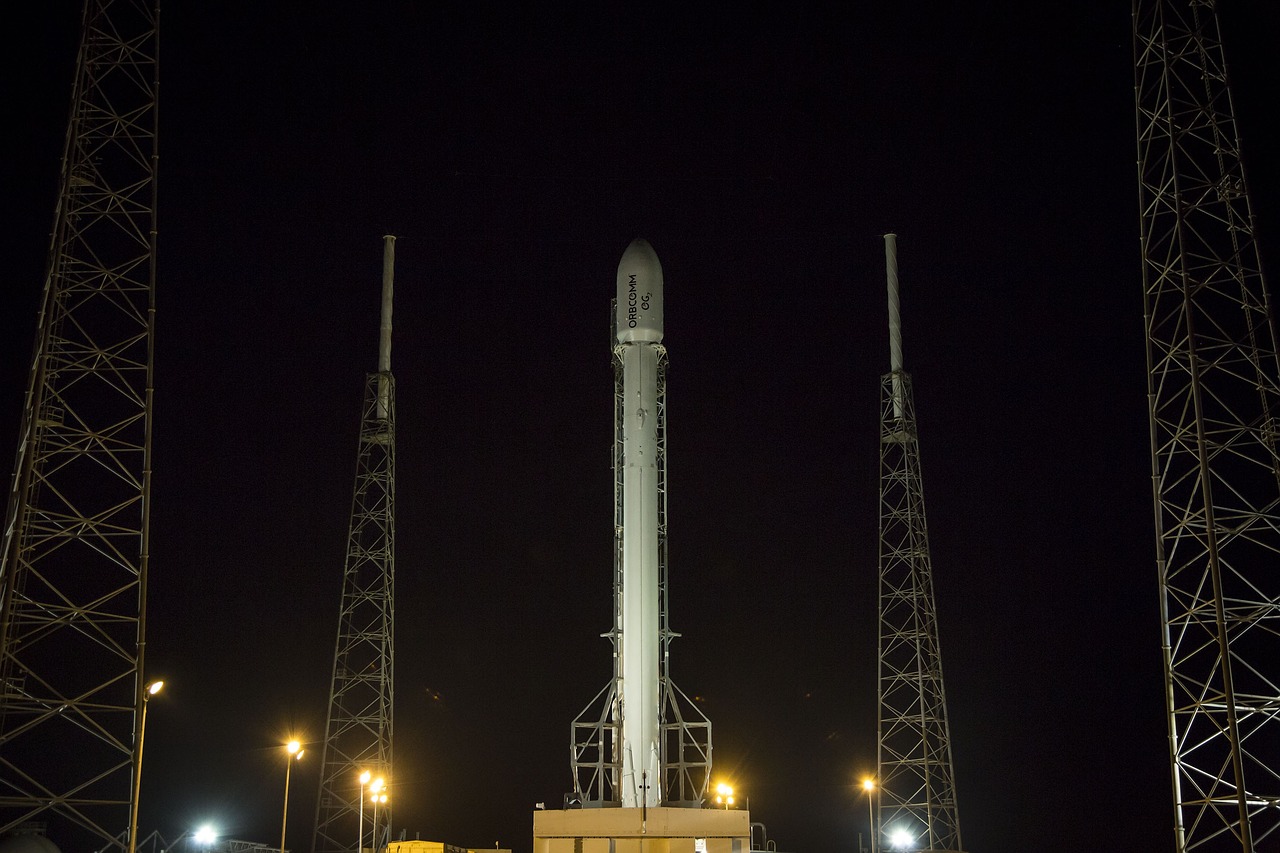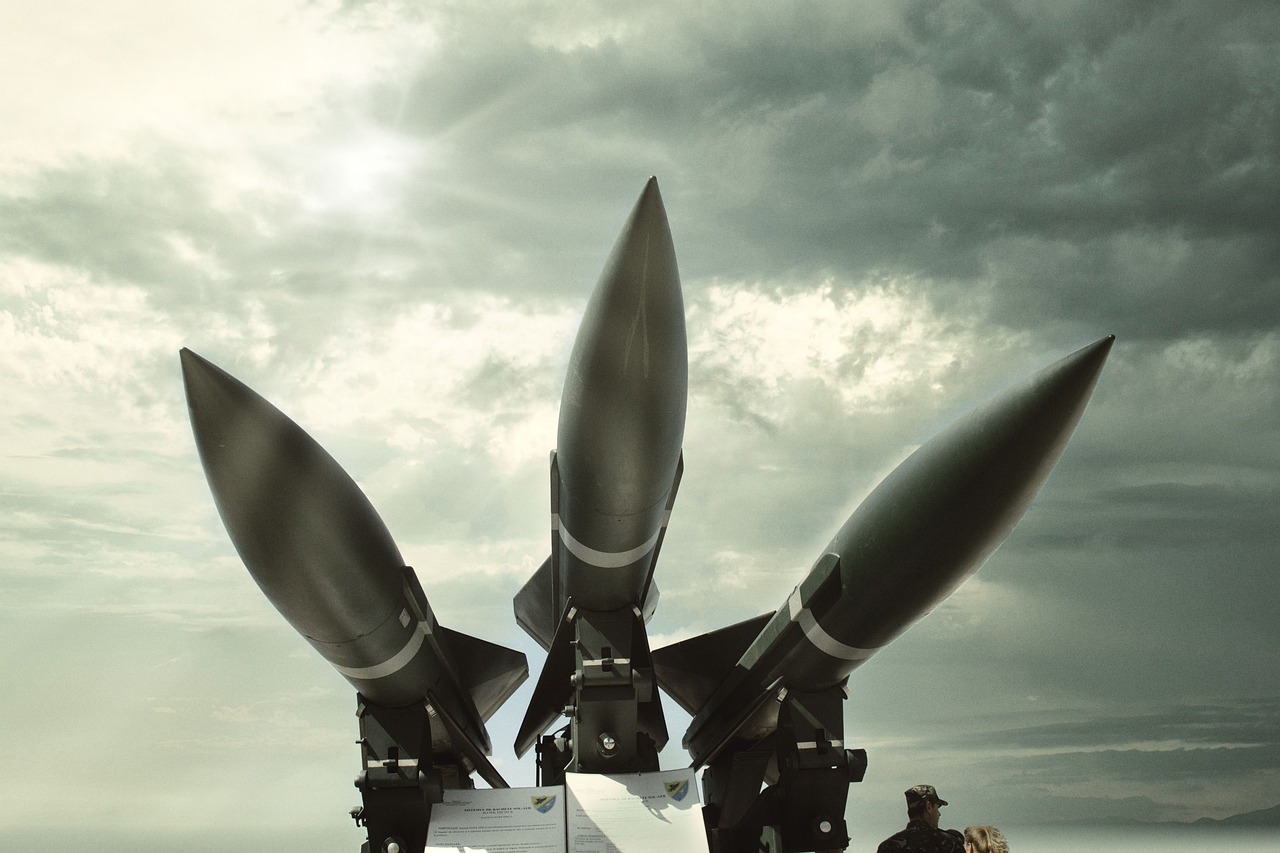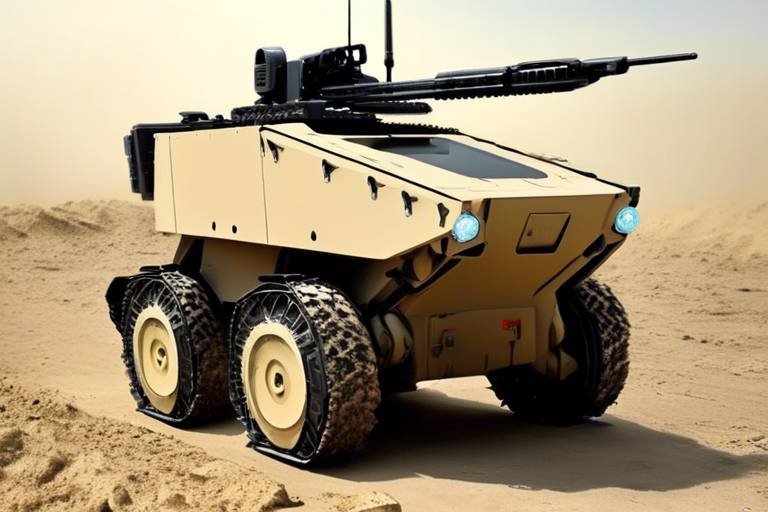The Use of the Javelin Missile System in Combat Scenarios
The Javelin missile system is not just another piece of military hardware; it represents a significant leap in anti-tank warfare. As we dive into the intricacies of this remarkable weapon, we’ll uncover its capabilities, deployment strategies, and the profound impact it has had on modern combat scenarios. The Javelin, with its fire-and-forget technology, has redefined how ground troops engage armored threats, allowing for a more dynamic and flexible approach on the battlefield. But what exactly makes this system so effective, and why is it a game changer for military operations? Let's explore.
The Javelin missile system is a portable, fire-and-forget anti-tank guided missile designed to engage and destroy armored vehicles. Its innovative design combines advanced technology with user-friendly operation, making it accessible for infantry units. The system consists of two main components: the Command Launch Unit (CLU) and the missile itself. The CLU features a thermal imaging sight that allows operators to detect and engage targets at long ranges, even in low visibility conditions. This capability is crucial for modern warfare, where the element of surprise can mean the difference between victory and defeat.
When we examine the operational capabilities of the Javelin missile system, it becomes clear why it has become a staple in modern military arsenals. With a range of approximately 2.5 kilometers, the Javelin can engage targets from a safe distance, reducing the risk to the operator. Its guidance system utilizes infrared homing technology, allowing it to lock onto targets with incredible precision. This versatility makes it effective in various combat environments, from urban settings to open fields.
One of the most remarkable features of the Javelin missile system is its fire-and-forget capability. This means that once the missile is launched, the operator can move to a different location without needing to maintain a lock on the target. This technology significantly enhances the survivability of ground troops, as they can quickly reposition themselves after firing, minimizing their exposure to enemy fire. Imagine being able to launch an attack and then vanish into the shadows, leaving the enemy bewildered and vulnerable.
The Lock-On Before Launch (LOBL) feature is another critical element of the Javelin's effectiveness. This capability allows operators to lock onto a target before firing, enabling them to engage from concealed positions. By remaining hidden, troops can avoid detection and retaliatory fire, which is crucial in high-stakes combat scenarios. This stealthy approach not only enhances the safety of the operators but also increases the likelihood of a successful strike against enemy armor.
In addition to its other features, the Javelin missile system boasts a top attack mode. This mode targets the most vulnerable parts of enemy tanks, typically the top armor, which is often less fortified than the sides or front. By striking from above, the Javelin maximizes its effectiveness against heavily armored vehicles. This tactical advantage is especially important as armored threats continue to evolve, making it essential for modern militaries to adapt their strategies accordingly.
The deployment of the Javelin missile system in real-world combat scenarios has consistently demonstrated its effectiveness. From the conflicts in Iraq to the ongoing tensions in Eastern Europe, the Javelin has proven to be a reliable asset in the hands of skilled operators. For instance, during the Battle of Mosul, Javelin missiles were instrumental in neutralizing ISIS armored vehicles, showcasing the system's capability to adapt to different combat environments and threats.
The introduction of the Javelin missile system has significantly influenced modern warfare tactics. Its advanced features have reshaped military strategies, allowing ground forces to engage armored threats with unprecedented efficiency. The Javelin not only enhances the lethality of infantry units but also promotes a more integrated approach to combat, where different branches of the military can work together seamlessly.
As armored threats evolve, the Javelin missile system provides an essential countermeasure. Its ability to neutralize advanced enemy tanks and armored vehicles makes it a critical component of any modern military's arsenal. The Javelin has become synonymous with anti-tank warfare, ensuring that ground troops can effectively counter even the most formidable armored units.
The integration of the Javelin missile system with infantry units enhances battlefield coordination. This collaboration allows infantry and armored units to maximize the Javelin's impact in combat operations. By working together, these forces can create a more formidable presence on the battlefield, ensuring that they are always one step ahead of their adversaries.
- What is the range of the Javelin missile system? The Javelin has an effective range of approximately 2.5 kilometers.
- How does the fire-and-forget technology work? Once launched, the missile can track its target autonomously, allowing the operator to move to safety.
- What makes the Javelin effective against armored vehicles? Its top attack mode targets the most vulnerable parts of enemy tanks, maximizing damage potential.
- Can the Javelin be used in urban combat? Yes, the Javelin's versatility makes it effective in various combat environments, including urban settings.

Overview of the Javelin Missile System
The Javelin missile system stands as a pinnacle of modern military technology, designed to address the ever-evolving challenges of armored warfare. This portable, fire-and-forget anti-tank guided missile is engineered to provide ground troops with a powerful tool for neutralizing enemy armored vehicles. At its core, the Javelin system combines advanced engineering with user-friendly operation, making it a favorite among military forces worldwide.
The Javelin is composed of two main elements: the missile itself and a command launch unit (CLU). The CLU is equipped with a sophisticated infrared seeker that allows for precise targeting, giving operators the ability to engage threats from a safe distance. This system's design emphasizes mobility and ease of use, enabling soldiers to transport it quickly across various terrains. In addition, the Javelin’s lightweight construction ensures that it can be carried by individual soldiers, enhancing its operational flexibility.
One of the most remarkable features of the Javelin missile system is its fire-and-forget capability. This means that once the missile is launched, the operator can immediately relocate to a safer position without needing to track the missile's flight. This capability not only enhances the survivability of the troops but also allows them to maintain tactical flexibility in dynamic combat environments. Imagine being able to fire a missile and then swiftly move to a concealed position, all while knowing that the missile will autonomously seek out its target. This is a game-changer on the battlefield.
Moreover, the Javelin is equipped with advanced guidance systems that enhance its effectiveness. With its Lock-On Before Launch (LOBL) feature, operators can acquire and lock onto a target before firing, allowing them to remain hidden from enemy sight. This capability is crucial when engaging well-protected enemy forces, as it minimizes exposure to incoming fire. Additionally, the Javelin's Top Attack Mode enables it to strike from above, targeting the most vulnerable areas of armored vehicles, such as the turret or rear, maximizing its destructive potential.
In summary, the Javelin missile system is not just a weapon; it is a comprehensive solution to modern combat challenges. Its blend of portability, advanced technology, and tactical versatility makes it an invaluable asset for ground forces. As military strategies continue to evolve, the Javelin missile system remains at the forefront, adapting to meet the demands of contemporary warfare.
- What is the range of the Javelin missile system? The Javelin missile has an effective range of approximately 2.5 kilometers (1.5 miles), making it suitable for various combat scenarios.
- How does the fire-and-forget technology work? Fire-and-forget technology allows the missile to autonomously track and engage its target after launch, freeing the operator to move to safety.
- Can the Javelin be used against targets other than tanks? Yes, while primarily designed for armored vehicles, the Javelin can also engage other targets, such as bunkers and light vehicles.
- How does the Javelin integrate with infantry units? The Javelin's portability and ease of use allow infantry units to coordinate effectively with armored support, maximizing their operational impact.

Operational Capabilities
The operational capabilities of the Javelin missile system are what truly set it apart in the modern battlefield. Designed to be a game-changer, this advanced anti-tank guided missile boasts a remarkable range, sophisticated guidance systems, and unparalleled versatility. Imagine being a soldier on the front lines, equipped with a weapon that not only targets enemy tanks but does so with pinpoint accuracy and minimal risk to the operator. That's the power of the Javelin.
One of the most impressive aspects of the Javelin is its effective range, which typically spans over 2.5 kilometers (approximately 1.5 miles). This allows operators to engage targets from a safe distance, reducing their exposure to counterfire. In contrast to traditional anti-tank weapons that often require close proximity to enemy forces, the Javelin allows troops to strike from concealed positions, making it a strategic asset in any combat scenario.
Furthermore, the Javelin's guidance system employs a combination of infrared homing and advanced target recognition technology. This means that once the missile is launched, it can autonomously track and engage its target without further input from the operator. This fire-and-forget capability is revolutionary. It not only enhances the survivability of ground troops but also allows them to focus on their next target or seek cover without having to babysit the missile.
The fire-and-forget technology is more than just a catchy phrase; it’s a tactical advantage that can mean the difference between life and death in combat. When a soldier launches a Javelin missile, they can immediately reposition or engage another target, knowing that the missile will continue on its path to destruction. This capability is particularly vital in fast-moving combat situations where every second counts. Imagine trying to reload or aim another weapon while under fire; the Javelin alleviates that pressure, allowing for greater tactical flexibility.
Another critical feature of the Javelin missile system is its lock-on before launch (LOBL) capability. This allows operators to acquire and lock onto a target before firing, ensuring that they can engage effectively while remaining concealed. Picture a sniper carefully lining up their shot, hidden from view, ready to strike with precision. This feature significantly reduces the risk of detection, making it harder for enemy forces to retaliate. It’s this blend of stealth and power that makes the Javelin such a formidable weapon on the battlefield.
In addition to its impressive range and guidance systems, the Javelin missile features a top attack mode, which is particularly devastating against armored vehicles. When deployed, the missile ascends before diving down onto its target, striking from above where armor is typically weaker. This tactical advantage can turn the tide in engagements against heavily armored tanks. Think of it as a hawk swooping down on its prey; it’s a predatory approach that maximizes damage and minimizes the chances of interception.
In summary, the operational capabilities of the Javelin missile system are a blend of cutting-edge technology and tactical advantages that reshape how ground forces engage armored threats. Its range, autonomous guidance, and innovative attack modes make it a vital asset in modern warfare.
- What is the effective range of the Javelin missile system?
The Javelin missile system has an effective range of over 2.5 kilometers (approximately 1.5 miles). - How does the fire-and-forget technology work?
The fire-and-forget technology allows the missile to track its target autonomously after launch, freeing the operator to engage other targets or seek cover. - What is the advantage of the top attack mode?
The top attack mode targets the most vulnerable parts of armored vehicles, increasing the likelihood of a successful strike.

Fire-and-Forget Technology
The embedded in the Javelin missile system is one of its most remarkable features, revolutionizing the way ground troops engage armored threats. Imagine being able to launch a missile and then immediately shift your focus elsewhere—this is the essence of fire-and-forget. Once the missile is launched, it autonomously tracks its target using advanced guidance systems, allowing the operator to seek cover or prepare for the next target without the constant worry of maintaining a lock. This capability not only enhances the survivability of the operator but also increases tactical flexibility on the battlefield.
In traditional anti-tank weapons, operators often have to keep their sights trained on the target until the missile impacts, exposing themselves to enemy fire. However, with the Javelin's fire-and-forget technology, operators can engage multiple targets in quick succession or reposition themselves to avoid detection. This feature is particularly critical in fast-paced combat scenarios where time is of the essence. The Javelin's infrared seeker locks onto the target at launch, ensuring a high probability of hit while letting the operator escape to safety.
Moreover, the fire-and-forget capability is enhanced by the Javelin’s Lock-On Before Launch (LOBL) feature. This means that operators can lock onto a target while remaining concealed, minimizing their exposure to enemy fire. By launching the missile from a hidden position, they can effectively engage threats without revealing their location, which is crucial in urban warfare or complex terrains. This combination of features not only boosts the effectiveness of the Javelin missile system but also transforms the dynamics of ground combat, making it a game-changer in modern warfare.
In summary, the fire-and-forget technology of the Javelin missile system exemplifies how modern advancements in military technology can significantly enhance combat operations. It empowers soldiers to engage threats with confidence and efficiency, ensuring that they can adapt to the ever-changing battlefield landscape. As we continue to witness the evolution of warfare, the Javelin stands as a testament to innovation in military strategy and technology.
- What is fire-and-forget technology? - Fire-and-forget technology allows a missile to autonomously track and engage a target after launch, freeing the operator to move or engage other targets.
- How does the Javelin missile system enhance operator safety? - By enabling operators to launch missiles without needing to maintain a lock, they can reposition to safer locations, reducing exposure to enemy fire.
- Can the Javelin missile system be used in urban combat? - Yes, the Javelin's ability to lock onto targets while remaining concealed makes it particularly effective in urban environments.
- What role does Lock-On Before Launch (LOBL) play in the Javelin's effectiveness? - LOBL allows operators to engage targets while hidden, minimizing their risk and enhancing tactical advantage.

Lock-On Before Launch
The (LOBL) feature of the Javelin missile system is a game changer on the battlefield. Imagine being able to engage a target while remaining hidden from enemy sight—this is precisely what LOBL allows operators to do. By locking onto a target before firing, troops can fire the missile and then quickly reposition themselves, minimizing their exposure to enemy fire. This capability is crucial in modern combat, where the element of surprise can mean the difference between success and failure.
In practical terms, LOBL enhances the effectiveness of the Javelin by allowing it to be used in a variety of tactical situations. For instance, when infantry units encounter armored threats, they can quickly identify and lock onto targets using the missile's advanced imaging systems. Once locked, they can fire and take cover, all within a matter of seconds. This not only increases the chances of a successful hit but also keeps the operators safe from counterattacks.
Furthermore, the LOBL feature is particularly beneficial in urban environments where visibility is limited. In such scenarios, the ability to lock onto a target from behind cover or at a distance allows troops to engage enemy vehicles without exposing themselves to fire. The Javelin’s thermal imaging and guidance systems provide operators with a clear advantage, enabling them to strike effectively while remaining concealed.
To illustrate the impact of LOBL, consider the following table that outlines key features and benefits:
| Feature | Benefit |
|---|---|
| Pre-launch Target Lock | Increases accuracy and hit probability. |
| Concealment Capability | Reduces operator exposure to enemy fire. |
| Rapid Engagement | Allows for quick strikes and repositioning. |
| Enhanced Target Acquisition | Improves effectiveness in low-visibility conditions. |
In summary, the Lock-On Before Launch capability of the Javelin missile system not only enhances the operational effectiveness of ground troops but also embodies the evolution of modern warfare tactics. By enabling operators to engage enemies while minimizing risk, LOBL represents a significant advancement in anti-tank warfare technology. As threats evolve, this feature will undoubtedly remain a vital component of military strategy.
- What is the primary advantage of Lock-On Before Launch?
It allows operators to engage targets while remaining concealed, enhancing their survivability. - Can the Javelin be used in urban combat?
Yes, its LOBL capability is particularly useful in urban environments where visibility is limited. - How does LOBL improve accuracy?
By locking onto a target before firing, the missile can be aimed more precisely, increasing the likelihood of a successful hit. - What technology supports the LOBL feature?
The Javelin utilizes advanced imaging systems, including thermal imaging, to lock onto targets effectively.

Top Attack Mode
The of the Javelin missile system is one of its most impressive features, providing a tactical edge that can turn the tide of battle. This mode allows the missile to ascend to a high altitude before diving down onto its target, specifically targeting the most vulnerable areas of enemy armored vehicles. Why is this important? Well, the top of a tank is often less fortified than its sides or front, making it a prime target for an effective strike.
Imagine a skilled archer aiming for the bullseye from a distance; the Javelin operates similarly, but instead of an arrow, it sends a missile soaring through the sky. This high-angle attack not only increases the chances of penetrating armor but also makes it harder for the enemy to predict and intercept the incoming threat. The result? A more lethal and efficient engagement that can devastate even the most advanced tanks.
Moreover, the Javelin's ability to switch to Top Attack Mode enhances its versatility in various combat scenarios. For instance, in urban warfare, where buildings and other structures can obstruct direct lines of sight, the Javelin can be fired from concealed positions, allowing soldiers to remain hidden while still engaging armored threats. This capability not only protects the operators but also maximizes the element of surprise, making it a formidable weapon on the battlefield.
To illustrate the effectiveness of the Top Attack Mode, consider the following table which outlines its key advantages:
| Advantage | Description |
|---|---|
| Vulnerability Targeting | Targets the weak top armor of tanks, increasing penetration chances. |
| Survivability | Allows operators to fire from concealed positions, minimizing exposure. |
| Element of Surprise | High-altitude launch makes it harder for enemies to track and counter. |
| Versatility | Effective in various terrains and combat situations, including urban environments. |
In conclusion, the Top Attack Mode is not just a technical feature; it represents a shift in how ground forces can approach armored threats. With this capability, the Javelin missile system empowers soldiers to engage with confidence, knowing they have a weapon that can effectively neutralize even the most fortified adversaries. As warfare continues to evolve, the importance of such advanced technology cannot be overstated.
- What is the range of the Javelin missile system?
The Javelin has an effective range of approximately 2.5 kilometers (1.5 miles). - Can the Javelin be used in adverse weather conditions?
Yes, the Javelin is designed to operate in various weather conditions, though extreme conditions may affect its performance. - How long does it take to prepare the Javelin for launch?
Typically, it takes less than a minute to prepare and launch the Javelin missile once the operator is in position.

Deployment in Combat Scenarios
The deployment of the Javelin missile system in real-world combat scenarios has been nothing short of revolutionary. This portable, fire-and-forget anti-tank guided missile has proven its worth in various conflicts around the globe, showcasing its adaptability and effectiveness in a multitude of environments. From the rugged terrains of Afghanistan to the urban landscapes of Syria, the Javelin has become a pivotal tool in the arsenal of ground troops.
One of the most notable deployments occurred during the Iraq War, where the Javelin was used extensively by U.S. forces. Its ability to engage enemy armor from a distance allowed soldiers to remain concealed while effectively neutralizing threats. In one instance, a squad of infantry used the Javelin to take out a fortified enemy position that was heavily defended by tanks. The result? A decisive victory with minimal risk to the soldiers on the ground. This highlights not just the missile's effectiveness, but also its role in enhancing the safety of troops in combat.
In addition to its operational success in Iraq, the Javelin has also seen action in Eastern Europe, particularly in the ongoing conflict involving Ukraine. The Ukrainian forces have utilized the Javelin against Russian armored units, demonstrating its capability to disrupt and destroy enemy formations. The Javelin's top attack mode has been particularly effective, allowing it to target the vulnerable tops of tanks, which are often less armored than their sides or fronts. Such tactical advantages have made the Javelin a sought-after asset in modern warfare.
Moreover, the Javelin's deployment is not limited to traditional battlefields. Its compact design and ease of use make it a favorite among special operations forces, who often find themselves in unconventional combat situations. For instance, during covert operations, Javelin operators can engage high-value targets while remaining undetected, significantly altering the dynamics of engagement.
To further illustrate the effectiveness of the Javelin in various combat scenarios, here’s a brief overview of its deployment in different conflicts:
| Conflict | Year | Key Outcomes |
|---|---|---|
| Iraq War | 2003-2011 | Effective neutralization of armored threats with minimal troop exposure. |
| Afghanistan | 2001-2021 | Enhanced ground troop safety while engaging enemy positions. |
| Ukraine Conflict | 2014-Present | Successful engagements against advanced Russian armor, altering battlefield dynamics. |
The Javelin missile system continues to evolve and adapt to the changing landscape of warfare. Its deployment in combat scenarios serves as a testament to its significance in modern military strategies. As threats become more sophisticated, the need for advanced systems like the Javelin becomes even more critical, ensuring that ground forces remain effective and safe in the face of danger.
- What is the range of the Javelin missile system? The Javelin has an effective range of approximately 2.5 kilometers (1.5 miles).
- How does the fire-and-forget technology work? Once launched, the Javelin can lock onto its target and guide itself without needing further input from the operator.
- Can the Javelin be deployed in urban combat? Yes, its compact design and versatility make it suitable for urban warfare scenarios.
- What types of targets can the Javelin engage? The Javelin is primarily designed to target armored vehicles but can also engage other high-value targets.

Impact on Modern Warfare
The introduction of the Javelin missile system has undeniably transformed the landscape of modern warfare. As conflicts evolve and the nature of threats change, the Javelin has become a vital asset for ground forces, providing them with a tactical edge that was previously unattainable. This missile system is not just a weapon; it symbolizes a shift in military strategy, emphasizing precision, mobility, and adaptability in combat scenarios. Its deployment has influenced how military planners approach engagements, particularly in environments where traditional warfare tactics may fall short.
One of the most significant impacts of the Javelin missile system is its ability to counter advanced armored threats. As enemy forces enhance their capabilities with more sophisticated tanks and armored vehicles, the Javelin stands as a formidable countermeasure. With a range of approximately 2.5 kilometers and the ability to engage targets effectively from concealed positions, it allows infantry units to neutralize threats without exposing themselves to direct fire. This capability has changed the rules of engagement, enabling smaller units to take on larger, more heavily armed adversaries.
Moreover, the Javelin missile system enhances the integration between infantry and armored units. In modern combat, coordination is crucial, and the Javelin facilitates this by allowing infantry to engage enemy armor while remaining in the safety of cover. This synergy not only maximizes the effectiveness of ground troops but also fosters a more dynamic battlefield environment. For instance, in recent conflicts, we've seen how infantry equipped with Javelins can provide critical support to armored units, creating a multi-layered defense system that can adapt to various combat scenarios.
Another aspect of the Javelin's impact on modern warfare is its fire-and-forget technology. This feature allows operators to launch the missile and then shift their focus to other tasks, significantly enhancing their survivability on the battlefield. In high-pressure situations, where every second counts, this capability can mean the difference between life and death. Ground troops can engage multiple targets without the need to maintain a lock, thereby reducing their exposure to enemy fire and increasing their tactical flexibility.
In addition, the Javelin's top attack mode provides a critical advantage against armored vehicles. By targeting the most vulnerable parts of a tank—its top armor—the Javelin maximizes the potential for a successful hit. This method of engagement not only increases the likelihood of disabling enemy vehicles but also forces adversaries to rethink their defensive strategies. The psychological impact of knowing that infantry can strike from above adds a layer of complexity to battlefield tactics, compelling enemy forces to adapt in real-time.
In summary, the Javelin missile system's integration into modern military operations has reshaped the way ground forces engage in combat. Its advanced capabilities allow for greater flexibility, enhanced coordination between units, and a more effective response to evolving threats. As military technology continues to advance, the Javelin remains a critical component of contemporary warfare, ensuring that ground troops are equipped to face the challenges of today and tomorrow.
- What is the range of the Javelin missile system? The Javelin missile system has an effective range of approximately 2.5 kilometers.
- How does fire-and-forget technology work? This technology allows the operator to launch the missile and then focus on other tasks, as the missile autonomously homes in on its target.
- What is the significance of the top attack mode? The top attack mode allows the missile to target the most vulnerable areas of an armored vehicle, increasing the chances of a successful hit.
- How does the Javelin integrate with infantry units? The Javelin enhances battlefield coordination by enabling infantry to engage enemy armor while remaining concealed and protected.

Countering Armored Threats
The battlefield has evolved dramatically over the years, with armored threats becoming increasingly sophisticated. In this context, the Javelin missile system emerges as a game-changer, providing a robust countermeasure against modern tanks and armored vehicles. Think of the Javelin as the knight in shining armor for infantry units, designed to take down the dragons of the battlefield—those heavily fortified enemy tanks that once seemed invulnerable.
What makes the Javelin truly special is its ability to adapt to the changing landscape of warfare. As enemy forces upgrade their armor with advanced materials and technologies, the Javelin's top attack mode allows it to strike from above, targeting the most vulnerable points of these armored beasts. This capability is akin to a skilled archer aiming for the weak spot in a knight's armor, ensuring maximum damage where it counts the most.
Moreover, the Javelin's fire-and-forget technology adds another layer of effectiveness. Once launched, the missile can autonomously track its target, freeing the operator to seek cover or reposition. This feature is crucial when facing heavily armed adversaries, as it minimizes the risk of counterattacks. Imagine being able to launch a powerful strike and then duck behind cover, leaving the missile to do the dirty work—this is the tactical advantage that the Javelin brings to the table.
In real-world applications, the Javelin has been deployed in various conflicts, showcasing its prowess in neutralizing armored threats. For instance, during the recent engagements in urban environments, infantry units equipped with Javelins have successfully targeted enemy tanks that attempted to advance through narrow streets. The ability to engage from a concealed position means that these soldiers can hit hard without exposing themselves to enemy fire, turning the tide of battle in their favor.
To further illustrate the effectiveness of the Javelin system, let's take a look at a comparison table highlighting its capabilities against traditional anti-tank weapons:
| Feature | Javelin Missile System | Traditional Anti-Tank Weapons |
|---|---|---|
| Guidance System | Fire-and-forget with infrared homing | Manual guidance, often requiring continuous targeting |
| Attack Mode | Top attack for maximum penetration | Direct attack only |
| Range | Up to 2.5 miles (4 km) | Varies, typically shorter ranges |
| Deployment | Lightweight, easily portable | Heavier, often requiring vehicles for transport |
As we witness the ongoing evolution of armored warfare, the Javelin missile system stands out as a critical asset for military forces worldwide. Its combination of advanced technology, tactical flexibility, and operational effectiveness makes it an indispensable tool for countering armored threats in modern combat. With the Javelin in their arsenal, ground forces can face the challenges of today’s battlefield with confidence, knowing they have the means to neutralize even the most formidable opponents.
- What is the effective range of the Javelin missile system? The Javelin has an effective range of up to 2.5 miles (4 km), allowing it to engage targets from a safe distance.
- How does the fire-and-forget technology work? Once launched, the Javelin missile autonomously tracks its target, allowing the operator to take cover or reposition without needing to maintain a lock.
- What are the advantages of the top attack mode? The top attack mode targets the most vulnerable parts of armored vehicles, increasing the chances of a successful hit and maximum damage.
- Can infantry units effectively use the Javelin in urban combat? Yes, the Javelin's portability and precision make it highly effective for infantry units operating in urban environments.

Integration with Infantry Units
The integration of the Javelin missile system with infantry units marks a transformative shift in modern combat operations. Imagine a battlefield where infantry soldiers, equipped with this advanced weaponry, can engage enemy armored vehicles with precision and confidence. The Javelin's lightweight design and portability allow infantry units to maneuver easily across various terrains, enabling them to respond swiftly to threats. This synergy between infantry and the Javelin system not only enhances the firepower of ground troops but also fosters a cohesive operational strategy that maximizes the effectiveness of both.
One of the most significant advantages of integrating the Javelin missile system with infantry is the ability to conduct coordinated attacks. Infantry units can utilize the Javelin while remaining concealed, allowing them to launch surprise strikes against enemy forces. This capability is particularly crucial in urban warfare, where traditional armored units may struggle to navigate tight spaces. By leveraging the Javelin's fire-and-forget technology, infantry soldiers can engage targets and immediately reposition, minimizing their exposure to counterattacks.
Furthermore, the Javelin system supports a range of operational tactics that enhance battlefield effectiveness. For instance, infantry units can employ the missile in various scenarios:
- Ambush Tactics: By hiding in strategic locations, infantry can surprise enemy forces, using the Javelin to inflict significant damage before retreating to safety.
- Support for Armored Units: Javelin-equipped infantry can provide critical support to advancing armored units, neutralizing threats that may otherwise compromise their effectiveness.
- Defensive Operations: In defensive scenarios, infantry can use the Javelin to create a formidable barrier against advancing enemy tanks, significantly altering the dynamics of the engagement.
Additionally, the training and collaboration between infantry and armored units are vital for maximizing the Javelin's impact. Joint exercises that simulate real-world combat scenarios help build trust and understanding between different military branches. This integration ensures that when the Javelin is deployed, it is part of a larger tactical framework that includes communication and situational awareness, allowing for a more fluid and adaptive response to threats on the battlefield.
In summary, the integration of the Javelin missile system with infantry units represents a significant evolution in military tactics. By combining the strengths of both, modern armies can enhance their operational capabilities, ensuring they remain agile and effective in the face of evolving threats. As military engagements become more complex, this synergy will undoubtedly play a crucial role in shaping future combat strategies.
- What is the Javelin missile system?
The Javelin missile system is a portable, fire-and-forget anti-tank guided missile designed for use by infantry against armored threats. - How does the Javelin integrate with infantry units?
The Javelin enhances infantry capabilities by providing them with a powerful anti-tank weapon that can be used in various tactical scenarios, allowing for coordinated attacks and increased battlefield effectiveness. - What are the advantages of using the Javelin in urban warfare?
The Javelin's lightweight design and fire-and-forget technology enable infantry to engage armored vehicles while remaining concealed, making it ideal for the complexities of urban combat. - Can the Javelin be used in defensive operations?
Yes, the Javelin can be effectively used in defensive operations to neutralize advancing enemy tanks, providing a critical layer of protection for infantry and armored units.
Frequently Asked Questions
- What is the Javelin missile system?
The Javelin missile system is a portable, fire-and-forget anti-tank guided missile designed for use by ground troops. It features advanced technology that allows for high precision and effectiveness against armored targets.
- How does the fire-and-forget technology work?
This technology allows the operator to launch the missile and immediately move to cover without needing to maintain a lock on the target. This enhances the safety of the operator while increasing tactical flexibility on the battlefield.
- What are the key operational capabilities of the Javelin?
The Javelin boasts impressive range, advanced guidance systems, and versatility in various combat environments. Its ability to engage targets from concealed positions makes it a formidable weapon against enemy armor.
- What is the significance of the lock-on before launch feature?
This feature allows operators to lock onto a target before firing, which minimizes their exposure to enemy fire. It’s a game-changer for tactical operations, enabling effective strikes while remaining hidden.
- How does the top attack mode enhance its effectiveness?
The top attack mode targets the most vulnerable parts of enemy tanks, typically the turret and engine. This strategic advantage allows the Javelin to deliver maximum damage to heavily armored vehicles.
- Can you provide examples of Javelin deployment in combat?
Yes! The Javelin has been successfully utilized in various conflicts, including engagements in Iraq and Afghanistan, where it proved vital in countering armored threats and supporting ground troops.
- What impact has the Javelin missile system had on modern warfare?
The introduction of the Javelin has reshaped military strategies, providing ground forces with a reliable means to counter advanced armored threats. Its integration into infantry units enhances overall battlefield coordination.
- How does the Javelin integrate with infantry units?
Infantry units work closely with armored units to maximize the Javelin's impact. This collaboration ensures that ground troops can effectively engage enemy armor while maintaining safety and tactical advantage.



















